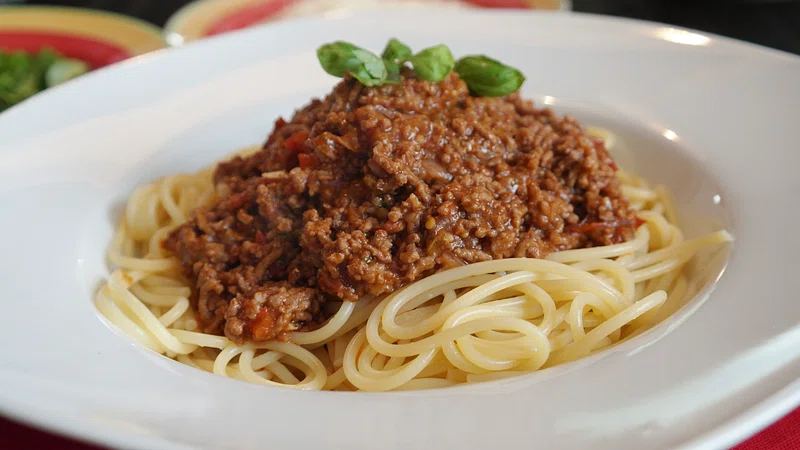Spaghetti and meatballs is a beloved classic in Italian-American cuisine, offering a comforting and flavorful combination that appeals to a wide variety of palates. For individuals with gluten sensitivities or celiac disease, however, enjoying this iconic dish can be a challenge—until now. The rise in popularity of gluten-free options has made it easier than ever to create a version of spaghetti and meatballs that is not only safe but also incredibly satisfying.
The Demand for Gluten-Free Options
The demand for gluten-free alternatives has surged in recent years, driven by increased awareness of gluten sensitivities, celiac disease, and a growing preference for gluten-free lifestyles. According to the Celiac Disease Foundation, approximately 1 in 100 people worldwide suffer from celiac disease, and many more individuals experience non-celiac gluten sensitivity. As a result, the market for gluten-free products has expanded significantly, with manufacturers offering everything from pasta to bread and baked goods.
For those following a gluten-free diet, traditional spaghetti made from wheat flour is off-limits. Fortunately, numerous gluten-free pasta brands have emerged, providing a range of alternatives made from rice, corn, quinoa, or chickpeas. These gluten-free pastas allow individuals to enjoy pasta dishes, including spaghetti and meatballs, without compromising on taste or texture.
Choosing the Right Gluten-Free Spaghetti
Selecting the right gluten-free spaghetti is key to creating a delicious and satisfying dish. The texture and flavor of gluten-free pasta can vary significantly depending on the ingredients used. Rice flour-based pasta tends to have a neutral flavor and a softer texture, while chickpea and quinoa pastas offer a heartier bite with added nutritional benefits.
For the best results, choose a gluten-free spaghetti that closely mimics the texture of traditional pasta. Some brands even offer blends of rice flour and corn flour, creating a more traditional mouthfeel. When cooking gluten-free spaghetti, it’s important to follow the package instructions carefully, as the cooking time can vary from brand to brand. Be sure to cook the pasta al dente to prevent it from becoming too mushy.
The Perfect Gluten-Free Meatballs
A well-crafted meatball is the heart of any spaghetti and meatballs dish. Traditional meatballs are often made with breadcrumbs to bind the ingredients together, but gluten-free meatballs require a little extra care. To replace the breadcrumbs, many gluten-free recipes use alternatives such as gluten-free breadcrumbs, almond flour, or ground oats.
In addition to the binder, the flavor of the meatballs is essential. A combination of ground beef, pork, or turkey provides the perfect base, while garlic, onions, and herbs like basil, oregano, and parsley enhance the flavor. A generous portion of grated Parmesan cheese adds richness and depth, while an egg helps hold everything together. Be sure to season the meatballs well, as the gluten-free ingredients can sometimes result in a slightly milder flavor.
Once the meatballs are formed, they can be baked or pan-fried until golden brown, then simmered in a rich marinara sauce. The sauce is often the star of the show, with its bold flavors of tomatoes, garlic, and herbs. For an extra touch of richness, add a splash of red wine or a dash of balsamic vinegar to the sauce.
Serving and Pairing
When serving gluten-free spaghetti and meatballs, presentation matters. Plate the pasta with a generous helping of marinara sauce, followed by the meatballs, and garnish with fresh basil or parsley. A sprinkle of grated Parmesan cheese adds a finishing touch.
For a balanced meal, pair the dish with a fresh green salad dressed in a light vinaigrette. The acidity of the vinaigrette complements the richness of the meatballs and sauce, creating a well-rounded dining experience.
Gluten-Free Spaghetti & Meatballs: A Trend with Staying Power
As gluten-free diets continue to grow in popularity, dishes like gluten-free spaghetti and meatballs are no longer considered niche but are quickly becoming mainstream. Thanks to the availability of high-quality gluten-free ingredients and innovative recipes, people with dietary restrictions can enjoy this comforting classic without sacrificing flavor or texture.
Whether you’re catering to gluten-free guests or simply looking to incorporate more inclusive meal options into your repertoire, gluten-free spaghetti and meatballs is a dish that everyone can enjoy. It’s a heartwarming, flavorful meal that brings people together, proving that gluten-free can be just as delicious as the original.
Conclusion
Gluten-free spaghetti and meatballs is a modern take on a traditional favorite, offering an inclusive option for those with gluten sensitivities or preferences. By carefully selecting gluten-free pasta and crafting flavorful meatballs with the right ingredients, this dish can be just as satisfying as its wheat-based counterpart. As the demand for gluten-free options continues to rise, dishes like gluten-free spaghetti and meatballs are sure to remain a popular choice on dinner tables everywhere.

